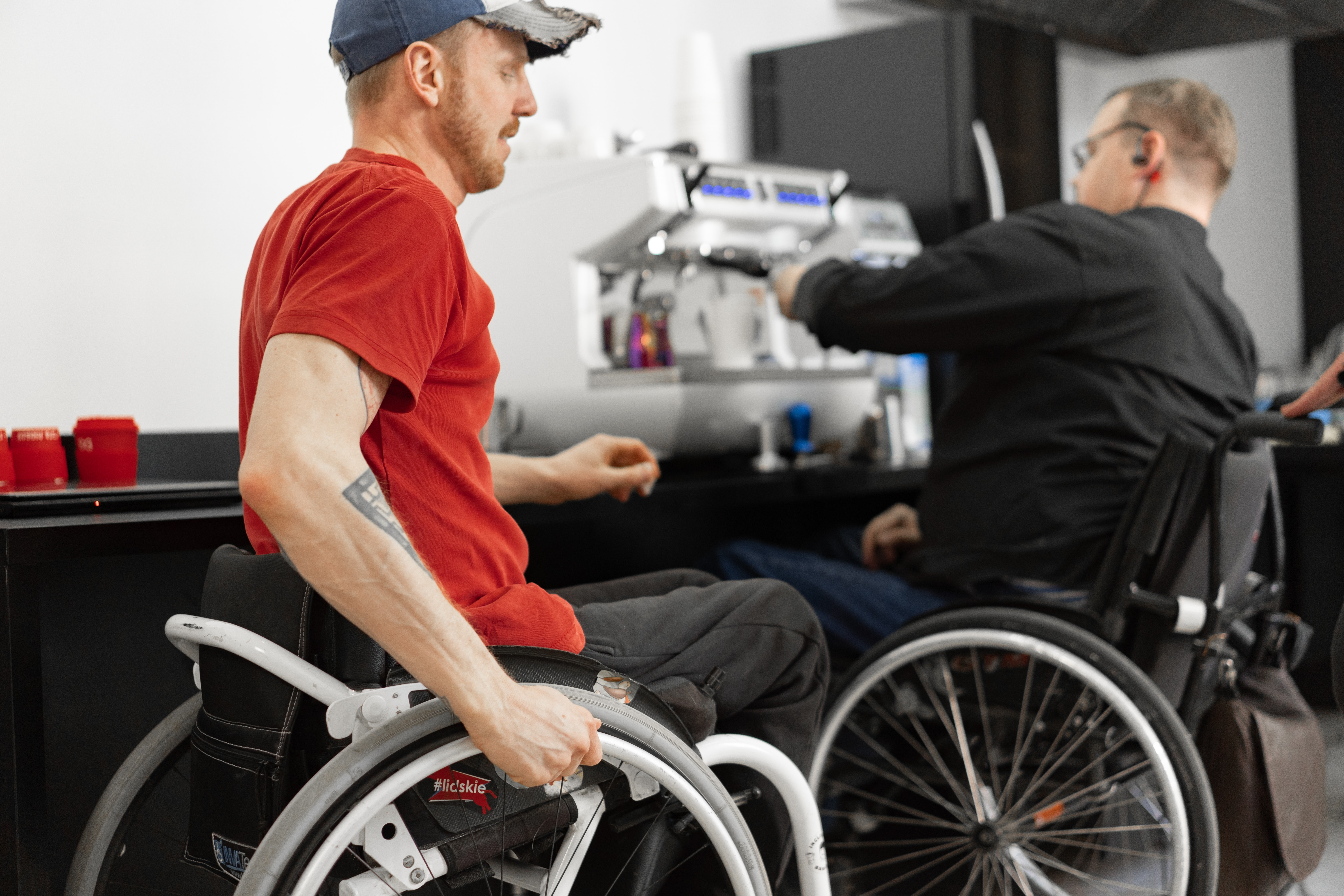Mental health and diversity are two important issues in the workplace. Mental health conditions affect people of all backgrounds, but they can be particularly challenging for people from diverse identity groups. This is because people from diverse identity groups may face discrimination, prejudice, and microaggressions at work, all of which can have a negative impact on their mental health.
Creating a more inclusive and supportive work environment for all employees is essential for promoting mental health and well-being. This means creating a workplace where everyone feels safe, respected, and valued, regardless of their race, ethnicity, gender, sexual orientation, gender identity, religion, disability, or any other aspect of their identity.
Mental Health Challenges Faced by Different Identity Groups in the Workplace
People from diverse identity groups can face a variety of mental health challenges in the workplace. Some of the most common challenges include:
Discrimination: Discrimination is the unfair treatment of a person or group on the basis of their identity. Discrimination can be overt, such as being denied a job or promotion because of your race or gender. It can also be covert, such as being treated differently or excluded from social activities at work.
Prejudice: Prejudice is an unfavorable opinion or feeling formed beforehand or without knowledge, thought, or reason. People from diverse identity groups may face prejudice from their colleagues and managers, even if they are not being overtly discriminated against. This prejudice can lead to feelings of isolation, exclusion, and insecurity.
Microaggressions: Microaggressions are subtle forms of discrimination that can be intentional or unintentional. Examples of microaggressions in the workplace include:
- Telling a Black employee that they speak so well.
- Asking a woman if she has a husband or children.
- Assuming that a person with a disability is unable to do a certain task.
- Using gendered language, such as "guys" or "ladies."
Imposter syndrome: Imposter syndrome is the feeling that you don't belong in your job, even though you are qualified for it. People from diverse identity groups are more likely to experience imposter syndrome because they may feel like they don't fit in with the majority culture at work.
Creating a More Inclusive and Supportive Work Environment for All Employees
A more inclusive and supportive work environment is one where all employees feel valued and respected, regardless of their race, ethnicity, gender, sexual orientation, gender identity, religion, disability, or any other aspect of their identity. It is a place where everyone feels comfortable bringing their whole selves to work, and where they are supported in achieving their professional goals. There are a number of things that employers and employees can do to create a more inclusive and supportive work environment for all employees. Here are a few tips:
There are a number of things that employers and employees can do to create a more inclusive and supportive work environment for all employees. Here are a few tips:
For employers:
- Educate yourself and your employees about mental health and diversity. This will help to raise awareness of the challenges faced by people from diverse identity groups and how to create a more inclusive workplace.
- Develop and implement policies and procedures that promote inclusion and diversity. This could include policies on anti-discrimination, harassment, and inclusion.
- Provide training for all employees on unconscious bias and microaggressions. This will help employees to become more aware of their own biases and how to avoid making microaggressions.
- Create a culture of psychological safety. This means creating a workplace where employees feel safe to speak up about their concerns and to ask for help.
- Offer mental health resources and support to all employees. This could include providing access to employee assistance programs, mental health professionals, and other resources.
For employees:
- Be an ally to your colleagues from diverse identity groups. This means speaking out against discrimination and microaggressions, and supporting your colleagues in the workplace.
- Educate yourself about the challenges faced by people from diverse identity groups. This will help you to be more understanding and supportive of your colleagues.
- Be mindful of your own biases and microaggressions. Everyone has biases, but it's important to be aware of them so that you can avoid acting on them.
- Take care of your own mental health. This includes getting enough sleep, eating healthy foods, exercising regularly, and connecting with loved ones.
How Employee Wellbeing Programs Can Support a More Inclusive and Supportive Work Environment
Wellbeing is mandatory to create a more inclusive and supportive work environment for all employees for a number of reasons.
First, when employees feel good about themselves and their lives, they are more likely to be productive, engaged, and creative at work. They are also more likely to be supportive of their colleagues and to contribute to a positive work environment.
Second, wellbeing can help to reduce the stigma associated with mental health conditions. When employees feel comfortable talking about their mental health, they are more likely to seek help when they need it. This can lead to improved mental health outcomes for employees, and a more supportive work environment for everyone.
Third, wellbeing can help to create a more inclusive workplace. When employees feel safe, respected, and valued, they are more likely to be productive and engaged at work. This is especially important for employees from diverse identity groups, who may face discrimination and microaggressions in the workplace.
Employee wellbeing programs can support a more inclusive and supportive work environment in a number of ways:
- Providing employees with access to mental health resources and support. This could include providing access to employee assistance programs (EAPs), mental health professionals, and other resources.
- Creating a culture where employees feel comfortable talking about their mental health. This means creating a workplace where employees feel safe to speak up about their concerns and to ask for help.
- Promoting a healthy work-life balance. Employees should have enough time to rest, relax, and connect with loved ones.
- Encouraging employees to take breaks during the workday. Employees should have the opportunity to take breaks to get up and move around, to step outside for some fresh air, or to simply clear their heads.
- Creating a more inclusive workplace. This means creating a workplace where everyone feels safe, respected, and valued, regardless of their race, ethnicity, gender, sexual orientation, gender identity, religion, disability, or any other aspect of their identity.
How Wellbeing Platforms Can Support Wellbeing Strategies
Wellbeing platforms can play a significant role in wellbeing strategies by providing employees with access to resources and support, by helping to create a culture of wellbeing, and by tracking and measuring progress over time.
These platforms can provide employees with a variety of resources and support to help them improve their physical, mental, and emotional well-being. This could include access to articles, videos, and tools on topics such as nutrition, fitness, stress management, and mental health. Wellbeing platforms may also offer access to mental health professionals, either through online or in-person counseling.
Another way wellbeing platforms can help to create a culture of wellbeing in the workplace, is by promoting healthy habits and behaviors, and by encouraging employees to support each other's well-being. For example, wellbeing platforms may offer features such as challenges and competitions, and social features such as online communities and forums.
Track and measure progress over time can help employers to estimate the impact of their wellbeing strategies over time. This can be done by collecting data on employee participation in wellbeing programs, and by tracking employee satisfaction and engagement levels.
By providing employees with access to resources and support, helping to create a culture of wellbeing, and tracking and measuring progress over time, wellbeing platforms can play a significant role in supporting wellbeing strategies.
Wellics: Supporting a More Inclusive and Supportive Work Environment through Well-being
Wellics is a comprehensive well-being platform that can help organizations create a more inclusive and supportive work environment for all employees. By leveraging machine learning algorithms on wearable and employee performance data, Wellics provides valuable insights into employee well-being and lifestyle. This data can be used to develop targeted interventions and support programs that meet the needs of all employees, regardless of their background or abilities.
Wellics’ structured micro coaching curriculum that is delivered weekly, and is based on the brand’s proprietary scientific content. This curriculum can help employees to learn about and improve their well-being in a comprehensive and sustainable way.
Offering a library of pre-designed challenges that can complement a corporate well-being strategy and inspire the active and ongoing engagement of employees. These challenges can be tailored to different levels of participation and can be used to promote healthy competition, collaboration, and teamwork.
Incorporating a rewards system that serves as an incentive for achieving sustainable well-being goals. This can help to motivate and support employees on their well-being journey, while also contributing to the greater company objectives.
Overall, Wellics is a comprehensive and user-friendly platform that can help organizations to create a more inclusive and supportive work environment by promoting employee well-being.
Is your company looking for a well-being platform to:
- Identify employees who are struggling with their sleep or mental health?
- Create a more inclusive workplace by running challenges that are relevant to employees from all backgrounds?
- Reward employees for achieving their well-being goals?
If so, then Wellics is the perfect platform for you!
Book a demo today to learn more about how Wellics can help your organization create a more inclusive and supportive work environment by promoting employee well-being!
Sources:
- https://recruitee.com/articles/inclusive-workplace-culture
- https://www.eeoc.gov/youth/what-employment-discrimination
- https://www.amazingworkplace.com/resources/article/prejudice-in-the-workplace
- https://hbr.org/2022/05/recognizing-and-responding-to-microaggressions-at-work
- https://asana.com/resources/impostor-syndrome
- https://www.cipd.org/en/knowledge/factsheets/well-being-factsheet/
- https://www.who.int//news-room/fact-sheets/detail/mental-health-at-work/







